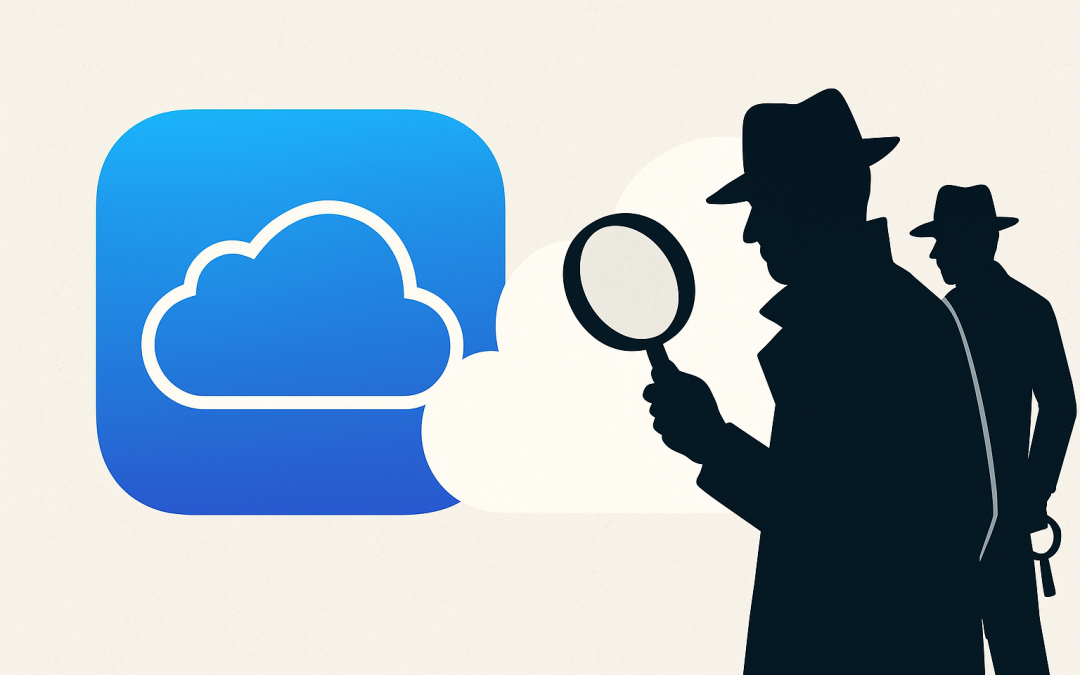iCloud vs Investigators : How Apple’s Security is Reshaping Digital Forensics
As mobile devices become central to digital investigations, Apple’s iCloud backup system presents a growing challenge for forensic professionals. While offering users a seamless experience for safeguarding their data, iCloud’s encryption and access controls have introduced significant hurdles for lawful data acquisition. Understanding how iCloud backups work—and how recent Apple security changes have impacted forensic tools—is crucial in navigating this evolving landscape.
How iCloud Backups Work and What They Include
iCloud backups are automatic, cloud-based copies of select data on an iPhone, iPad, or iPod touch. When enabled, Apple periodically backs up device data to the user’s iCloud account. These backups are typically incremental and include:
- Messages (iMessage, SMS, MMS)
- App data
- Photos and videos (if iCloud Photos is not enabled separately)
- Device settings
- Call history
- Safari bookmarks and history
- Health data (when encrypted)
However, iCloud backups do not contain every piece of data from a device. Certain items—like email from Apple’s Mail app, Apple Pay information, Face ID data, and some keychain entries—are either excluded or stored in other areas of iCloud. This selective inclusion means that an iCloud backup may only offer a partial representation of a device’s full data profile.
Local Backups vs. iCloud Backups
Local backups, made through iTunes or Finder, generally offer more comprehensive datasets, especially when encrypted. These backups can include:
- Keychain data
- Safari browsing history and cookies
- Messages and attachments
- Wi-Fi settings
- Health and HomeKit data
- App documents and more
Because local backups are stored on a computer, forensic tools have historically been more effective in acquiring them—especially when encryption credentials are known. In contrast, iCloud backups require network-based access, authenticated sessions, and compliance with Apple’s increasingly robust security measures.
Limitations Forensic Tools Face When Decrypting iCloud Backups
Accessing iCloud backups has become increasingly difficult due to Apple’s privacy-first architecture. Forensic tools attempting to retrieve this data must overcome several major limitations:
- Two-Factor Authentication (2FA): All iCloud accounts now require 2FA, meaning access isn’t possible without the user’s secondary device or trusted method of authentication.
- End-to-End Encryption: Apple has extended end-to-end encryption to many iCloud services. With features like Advanced Data Protection, even Apple can no longer decrypt the content on behalf of law enforcement or forensic examiners.
- Rate Limiting and Account Lockouts: Repeated login attempts, or misuse of iCloud tokens can lock accounts or block access attempts, especially when automated collection tools are used.
- Inconsistent Data Retrieval: Even when access is granted, forensic tools may only return limited sets of synced data—sometimes excluding media files, message attachments, or key app content.
What About Tools Like Elcomsoft or Cellebrite?
Over the years, tools like Elcomsoft Phone Breaker and Cellebrite UFED have offered capabilities for retrieving data from iCloud accounts—usually requiring Apple ID credentials, valid 2FA tokens, or authentication session tokens from trusted devices.
Notable Capabilities:
- Elcomsoft has long provided access to iCloud backup and synced data, health records, and app data—when proper credentials and tokens are available.
- Cellebrite supports iCloud acquisition in its premium offerings, typically tied to an authenticated device or existing session.
However, There Are Major Caveats:
- These tools rely on temporary methods that break frequently as Apple improves security.
- Most modern iCloud content is now encrypted end-to-end, and tools cannot decrypt it without access to the user’s device or passcode.
- Tools often require pairing records, token files, or active user sessions—factors that are increasingly unavailable in real-world forensic contexts.
- Ethical and legal access must be strictly followed, especially when dealing with personal cloud data under heightened privacy protections.
In short, while such tools may offer limited access under specific conditions, they are not a catch-all solution and should be used with full awareness of their rapidly changing effectiveness and legal boundaries.
The Ongoing Impact of Apple’s Security Updates
Apple’s privacy-first approach continues to limit forensic access with each update. The recent expansion of Advanced Data Protection now encrypts Photos, Notes, Voice Memos, Safari Bookmarks, and more making them accessible only with direct device access and custodian cooperation.
These changes mean that even with proper legal authority, acquiring a full picture of a user’s digital behavior from iCloud alone is increasingly unrealistic. Forensic workflows must adapt.
Moving Forward: Best Practices for Investigators
To work effectively in this landscape, forensic professionals should:
- Prioritize physical or custodian-facilitated access to the device whenever possible.
- Understand the differences between synced iCloud data, iCloud backups, and local full-device backups.
- Use forensic tools ethically and stay informed of their limitations as Apple’s security evolves.
- Maintain workflows that include user-directed exports or local review methods, which preserve privacy while enabling lawful data collection.
A Custodian-First Approach: CrossCopy Enterprise Mobile
In situations where full iCloud access isn’t possible—or legally appropriate—CrossCopy Enterprise Mobile (CCEM) offers an innovative alternative. Rather than attempting to bypass Apple’s security, CCEM empowers custodians to review and selectively collect relevant iPhone messages and attachments directly from their device or decrypted backup.
CrossCopy Enterprise Mobile allows for:
- Targeted message collection (SMS, iMessage, WhatsApp)
- Local custodian review before upload
- Privacy-respecting workflows that avoid mass data transfers
- Direct uploads to the client’s infrastructure (AWS, Azure, or SFTP) for maximum control
Unlike traditional forensic tools that require full backups or exploit-based access, CCEM is built for compliant, defensible, and privacy-aware collections, aligning with legal expectations and modern data protection standards.
Conclusion
While tools like Elcomsoft and Cellebrite have helped bridge the gap in accessing iCloud data, their capabilities are increasingly limited by Apple’s evolving security measures. As end-to-end encryption becomes the default for more services, the future of forensic access will rely more on custodian cooperation, local review, and innovative tools like CrossCopy Enterprise Mobile that prioritize privacy while maintaining legal defensibility.

